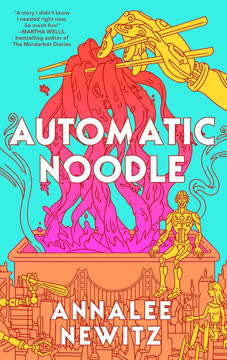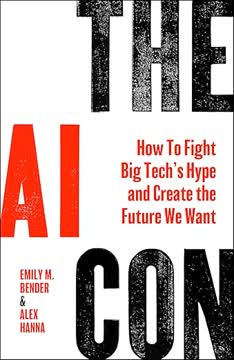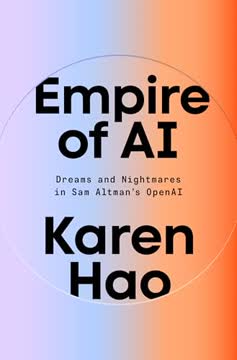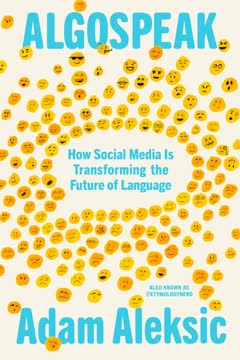Key Takeaways
1. Algospeak: The Language of Digital Censorship and Evasion
“Unalive” might have been surprising to casual museumgoers, but by that point it was already quite normal to middle school teachers.
Censorship breeds creativity. Social media platforms, especially TikTok, employ "sensitive words" tools and AI-driven algorithms to block or suppress content on topics like suicide prevention. This forces users to invent alternative terms, known as algospeak, to circumvent censorship. For example, "unalive" became a widespread synonym for "kill" or "commit suicide" after its popularization in early 2021, moving from online memes to offline use in schools and even museums.
Whac-A-Mole linguistics. This constant cat-and-mouse game between users and algorithms is like a linguistic Whac-A-Mole. As soon as a word is banned, users find a new one, only for that new word to eventually be caught and suppressed. This drives rapid linguistic innovation, leading to creative respellings (e.g., "fck" for "fuck"), emojis (e.g., 🍆 for "penis"), and minced oaths (e.g., "seggs" for "sex"), all designed to evade detection and maximize visibility.
Sociolects emerge. The need to bypass algorithmic filters has fostered a unique online sociolect. This shared language, like "unalive" or "seggs," serves a euphemistic function and signals belonging to the social media in-group. While some terms are intentionally silly, others are adopted out of habit or because they are perceived as "classroom-safe" alternatives, demonstrating how algorithmic pressures shape our daily vocabulary.
2. Algorithms Accelerate Language Trends and Memes
Words have the ability to evolve coterminously without being overshadowed by a single popular “yeet”-style video that dominates everyone’s recommended feed.
Trends drive diffusion. The rise of short-form video platforms like TikTok, with their highly personalized recommendation algorithms, has dramatically accelerated the spread of new words and memes. Viral "trends," often accompanied by trending audios or hashtags, encourage rapid replication and recombination of content. This creates a positive feedback loop where popular content gets amplified, leading to terms like "side-eye" and "rizz" to quickly enter mainstream usage.
Algorithmic pandering. Creators actively leverage their understanding of these algorithms to maximize visibility. They incorporate trending audios, words, and hashtags, knowing the algorithm will push their content to interested audiences. This "engagement treadmill" means that as certain content types gain traction, more creators produce similar videos, further boosting their popularity and making slang terms inextricable from the metadata that helps them spread.
Word survival factors. Not all trending words last. According to diffusion of innovations theory, a word's survival depends on its frequency, unobtrusiveness (not too noticeable or forced), and endurance factor (ability to be used in many grammatical situations or phrasal templates). For instance, "rizz" and "gyat" became widely adopted by Gen Alpha due to their catchiness and versatility, while others like the "chair emoji" faded once their novelty wore off.
3. The Attention Economy Shapes Our Online Speech
If there’s one fundamental feature I expect will never change, it’s that content that elicits a strong response will be pushed to more viewers.
Attention is currency. In the "attention economy" of social media, creators are in a constant battle to capture and hold user attention. This scarcity of attention forces influencers to employ specific linguistic tricks in their video hooks and content. Strategies include using superlatives ("most interesting," "least favorite"), second-person pronouns ("you know how X?"), and leveraging group dynamics ("am I the only one?").
Emotional manipulation. Content that elicits strong emotional responses, whether positive or negative, is more likely to go viral. This incentivizes "ragebaiting" (provoking anger) and "clickbaiting" (enticing promises), even if the content is misleading or frustrating. Paradoxically, "hate-watching" or commenting to correct misinformation still boosts engagement, perpetuating the cycle of attention-grabbing content.
Linguistic conditioning. Over time, creators become behaviorally conditioned to adopt speech patterns that maximize viewer retention. This includes the "influencer accent" (uptalk, emphatic prosody, vowel lengthening) and discourse markers like "no because," which prime viewers to expect engaging content. These tactics, often learned through trial and error and video analytics, become intuitive, demonstrating how algorithmic pressures subtly reshape our everyday language.
4. Social Media Homogenizes and Diversifies Language Simultaneously
The algorithm simultaneously unites us and divides us by creating a common online culture and then dividing us into smaller and smaller groups for us to create our own subcultures.
Americanization of accents. Social media platforms, dominated by American tech companies and users, exert pressure on international creators to "soften" their accents to appeal to a broader, predominantly American audience. This contributes to a global "Americanization" of English, potentially accelerating the disappearance of regional accents offline as well.
Prestige dialects emerge. The "influencer accent," with its uptalk and emphatic prosody, has become a new online prestige dialect. Consciously or subconsciously, creators adopt this style because it's associated with successful influencers and is perceived to perform better algorithmically. This "linguistic founder effect" means early adopters' speech patterns become norms, influencing later users and creating distinct online speaking styles.
Filter bubbles foster fanilects. While homogenizing some aspects, algorithms also personalize feeds, creating "filter bubbles" and "echo chambers" around niche interests. This allows "fanilects" (e.g., Swiftie fanilect, K-pop fanilect) to flourish, as in-groups develop specialized vocabulary to bond and signal belonging. The algorithm "knows" users by their engagement, pushing them deeper into these communities and reinforcing their linguistic identities.
5. Fringe Ideas and Slang Go Mainstream Through Memes
Ironically, the first people to bring looksmaxxing to TikTok appear to have been women, who unknowingly began repurposing incel concepts from the early “rate me” subreddits.
Extremist origins. Fringe online communities, like incels on 4chan, have historically generated a vast amount of highly specific slang (e.g., "blackpilled," "looksmaxxing," "mogging"). This vocabulary served to build in-group identity and prove "purity" within their radicalized echo chambers. Despite their extreme origins, these terms often possess a memetic quality that allows them to spread beyond their initial contexts.
Poe's Law in action. The blurred line between irony and authenticity, known as Poe's Law, enables dangerous ideas to spread as memes. What starts as satirical use of incel terms (e.g., "studypilled," "sigma") can be misinterpreted as genuine, or vice versa, driving engagement and normalizing the language. This allows concepts like "looksmaxxing" to enter mainstream beauty discourse, even if their eugenics-based origins are unknown to most users.
Doomslang and negativity. The spread of incel-associated "doomslang" (e.g., "it's over," "bedrotting," "brainrot") reflects a broader cultural pessimism. These terms resonate with younger generations and are amplified by algorithms that thrive on negativity and division. While often used ironically, their widespread adoption can inadvertently reinforce pessimistic worldviews and contribute to the "enshittification" of online content.
6. Linguistic Appropriation: When In-Group Slang Becomes Mainstream
The creation of “cool” and other AAE “slang” words was inherently cool under the original definition: The new vocabulary served as a concealed act of resistance against the straight white norms of the English language.
The "cool" cycle. African American English (AAE) has historically been a source of "cool" slang, created by marginalized communities as a form of linguistic resistance and in-group identity. However, these terms (e.g., "cool," "hip," "woke," "slay," "tea," "gyat") are often appropriated by mainstream culture, losing their original context and power as they become generalized "internet slang."
Ballroom culture's influence. The argot of 1980s Black and Latino ball culture (e.g., "slay," "work," "serve," "mother") exemplifies this appropriation. Popularized by media like RuPaul's Drag Race and then amplified by TikTok, these terms diffused to wider audiences, often without credit or understanding of their origins. This leads to a disconnect where the original community feels their language has been diluted and misused.
Digital blackface and harm. The appropriation of AAE can reinforce racist stereotypes, as non-Black users find exaggerated pronunciations or "Blaccents" humorous. Terms like "gyat" (from "goddamn") and "ahh" (from "ass") are stripped of their origins and become mere "brainrot" jokes, inadvertently legitimizing harmful generalizations. This "context collapse" means in-group language, intended for specific audiences, reaches unintended audiences who may misuse it, further eroding its original significance and benefiting larger accounts or corporations.
7. Algorithms Drive Identity and Commodification Through Microlabels
Your brand becomes part of their identity. TikTokers turn to subcultures to define their online and offline personas, which means they will actively seek out brands they can identify with and align to their true selves.
Metadata as identity. Social media algorithms thrive on categorization to provide personalized recommendations. This incentivizes the creation and spread of highly specific "microlabels" for aesthetics and lifestyles, such as "cottagecore," "Barbiecore," or "dark academia." These "-core" terms function as metadata, allowing algorithms to precisely target content and build niche communities around shared preferences.
Long-tail economics. This hyper-compartmentalization of identity aligns with the "long-tail model" of retail, where businesses profit by selling small quantities of unique items to niche audiences. Social media platforms actively foster these "subcultural demographics" through integrated shops and creator incentives. Influencers promote products that fit these aesthetics, blurring the line between authentic recommendations and commodified identities.
Enshittification of language. This commercialization contributes to the "enshittification" of platforms, where user experience is degraded to maximize profit. While seemingly expanding vocabulary, the focus on trending, marketable labels can paradoxically compress linguistic scope, favoring generic "adjective-core" terms over nuanced descriptors. This process encourages users to fit themselves into predefined boxes, limiting true individuality in favor of algorithmically optimized identities.
8. Generational Labels and "Brainrot" Reflect Online Tribalism
Even though generational labels might be functionally meaningless, their cultural salience appears to have increased in the social media era.
Generations as constructs. The concept of distinct social "generations" (Boomers, Millennials, Gen Z, Gen Alpha) is largely arbitrary, yet its cultural salience has been turbocharged by social media. Platforms categorize users by age, reinforcing these labels and fueling intergenerational "wars" through memes (e.g., "OK boomer," "millennial pause," "Gen Z shake"). This creates a positive feedback loop where perceived differences become more real.
"Brainrot" as a weapon. The term "brainrot" emerged to describe "internet slang" associated with Gen Alpha, implying their vocabulary is indicative of unhealthy online presence. This stigmatizes normal linguistic evolution and harms communities whose language is labeled as "toxic." The media's focus on "generational slang" further amplifies these divisions, turning natural language change into a source of friction and oversimplified stereotypes.
Flanderization of identity. Social media incentivizes creators to caricature themselves and their subcultures for views, leading to "Flanderization." This oversimplification extends to generational identities, where individuals conform to exaggerated stereotypes (e.g., the "Gen Z intern"). This process, amplified by algorithms that favor extreme content, can lead to a reduction of complex identities into simplistic, marketable narratives, fostering tribalism and hindering nuanced self-expression.
9. Global Algospeak: English as the Digital Lingua Franca
Never before has slang been so global.
English's global reach. Social media has cemented English as the undisputed lingua franca of the internet. Trends originating in English quickly translate into other languages, either as direct loanwords (e.g., "delulu") or calques (e.g., "desvivir" for "unalive" in Spanish). This global spread demonstrates how online platforms bypass traditional language planning institutions, allowing informal English slang to influence languages worldwide.
Decentralized language evolution. The internet empowers everyday citizens to drive language change, untethered from academic or governmental control. Despite censorship efforts in countries like China, users invent clever algospeak substitutions (e.g., "river crab" for "harmonious") that are nearly impossible to fully suppress. This highlights the ingenuity of human communication in adapting to new constraints, fostering a new era of decentralized etymology.
ASL's digital adaptation. American Sign Language (ASL) provides a visible example of language adapting to digital constraints. Signs for words like "dog" have evolved to fit vertical video formats, and one-handed signs are common due to smartphone use. While this can cause generational divides within the Deaf community, it also showcases the power of online connectivity to drive linguistic innovation and community building, even if it sometimes leads to the dilution of meaning by non-native users.
Last updated:
FAQ
What is Algospeak: How Social Media Is Transforming the Future of Language by Adam Aleksic about?
- Language evolution in digital age: The book explores how social media platforms and their algorithms are fundamentally reshaping the English language, introducing new slang, euphemisms, and communication styles.
- Algorithmic influence on speech: Aleksic examines how algorithms censor, promote, and spread certain words, leading to the rise of "algospeak"—a sociolect shaped by content moderation and recommendation systems.
- Cultural and social impact: The book delves into how online communities develop unique vocabularies, influence identity, and create filter bubbles that accelerate linguistic change.
- Interdisciplinary approach: Combining linguistics, social media analysis, and psychology, Aleksic provides a comprehensive look at the interplay between technology, language, and society.
Why should I read Algospeak by Adam Aleksic?
- Decode modern slang: The book helps readers understand how everyday language is being transformed by social media, making it easier to interpret new slang and communication patterns.
- Insight into digital culture: Aleksic explains the mechanisms behind viral trends, memes, and sociolects, making it essential for anyone interested in internet culture or linguistics.
- Critical perspective on algorithms: Readers gain awareness of how algorithms shape not only content but also language and identity, fostering more informed engagement with digital platforms.
- Practical relevance: The book offers valuable context for educators, parents, creators, and users navigating the digital landscape, especially regarding censorship, mental health, and community building.
What are the key takeaways from Algospeak by Adam Aleksic?
- Algorithms shape language: Social media algorithms actively influence which words and phrases become popular, driving the evolution of language online and offline.
- Emergence of new sociolects: Niche communities develop unique vocabularies ("fanilects" and "microlabels") that reinforce group identity and can spread to mainstream culture.
- Cycle of censorship and creativity: Users constantly invent new euphemisms and spellings to evade algorithmic moderation, leading to rapid linguistic innovation.
- Ethical and social implications: Algorithm-driven language change can foster community but also amplify misinformation, polarization, and cultural appropriation.
What is "algospeak" as defined in Algospeak by Adam Aleksic?
- Definition and origin: Algospeak is the specialized language, euphemisms, and slang developed to navigate social media algorithms, often to evade censorship or optimize engagement.
- Examples and scope: Words like "unalive" (for "suicide") and "seggs" (for "sex") are common examples, along with playful respellings and new grammatical patterns.
- Sociolect and in-group function: Algospeak signals belonging among social media users and helps communities communicate under platform constraints.
- Algorithmic role: Algorithms determine which terms gain traction by promoting content that fits guidelines and engagement metrics, actively shaping language evolution.
How do social media algorithms influence language and culture according to Algospeak by Adam Aleksic?
- Personalized content feeds: Algorithms analyze user behavior to recommend content, accelerating the spread of slang and memes within and beyond niche communities.
- Engagement-driven amplification: Words and memes that generate high engagement are promoted, creating feedback loops that rapidly popularize certain terms.
- Commercial incentives: Platforms commodify language trends by encouraging creators to use specific keywords and microlabels, aiding targeted marketing.
- Cycle of irony and sincerity: The book discusses how language oscillates between ironic meme use and serious adoption, complicating tone and meaning.
How does the word "unalive" illustrate the concepts in Algospeak by Adam Aleksic?
- Euphemism for sensitive topics: "Unalive" emerged as a way to discuss suicide or death without triggering censorship, making difficult conversations more approachable.
- Algorithmic censorship origin: The term gained popularity due to content moderation on platforms like TikTok, where direct mentions of suicide were suppressed.
- Spread from online to offline: "Unalive" transitioned from internet meme to everyday speech, even appearing in educational contexts.
- Linguistic evolution example: Aleksic situates "unalive" within a historical pattern of euphemizing death, showing how social media accelerates this process.
What is the "linguistic Whac-A-Mole" phenomenon in Algospeak by Adam Aleksic?
- Censorship and creativity cycle: Users invent new words or spellings to evade moderation, only for platforms to catch on and suppress those terms, prompting further innovation.
- Historical continuity: This cycle has roots in early internet slang like leetspeak but now operates faster due to AI-driven algorithms.
- Examples of bowdlerization: Creative respellings (e.g., "f*ck" as "fvck") and emoji substitutions are common tactics to avoid detection.
- Social and algorithmic pressures: The phenomenon is driven by both the need to discuss sensitive topics and the opaque rules of social media platforms.
What are "microlabels" and how do they relate to language change in Algospeak by Adam Aleksic?
- Definition of microlabels: Microlabels are highly specific identity or aesthetic labels, often ending in "-core" (e.g., "cottagecore"), that categorize niche communities online.
- Algorithmic function: These labels serve as metadata for algorithms to personalize content recommendations, reinforcing filter bubbles and engagement.
- Cultural and commercial effects: Microlabels help users find identity communities but also enable brands to commodify these identities for marketing.
- Impact on individuality: While offering more self-expression options, microlabels can paradoxically constrain creativity by boxing users into algorithm-driven categories.
How does Algospeak by Adam Aleksic explain the spread and impact of incel language and memes?
- Origins and spread: Incel slang and memes began in niche online communities and spread to mainstream platforms, often through ironic meme formats.
- Algorithmic amplification: The shock value and negativity of incel language make it highly engaging, causing algorithms to promote it widely.
- Blurred lines of meaning: Poe’s law allows incel memes to be interpreted as both satire and sincere belief, enabling dangerous ideas to spread under the guise of humor.
- Cultural consequences: The mainstreaming of incel language influences beauty standards, social attitudes, and even political discourse.
What does Algospeak by Adam Aleksic say about linguistic appropriation, especially of African American English (AAE)?
- Cycle of appropriation: AAE slang often starts as in-group identity markers but is adopted by mainstream culture, leading to loss of original meaning.
- Examples and effects: Terms like "slay," "tea," and "gyat" have moved from Black communities to widespread internet slang, sometimes without credit.
- Commercialization and commodification: Companies and influencers profit from AAE-derived slang, often without involving or compensating the original communities.
- Social consequences: Appropriation can reinforce stereotypes and spark debates about language ownership and respect in digital spaces.
How does Algospeak by Adam Aleksic describe the role of generational slang and identity in online language?
- Generations as social constructs: Generational labels like Gen Z and millennials are culturally meaningful but scientifically arbitrary, gaining prominence through social media memes.
- Emergence of generational slang: Social media accelerates the spread of slang associated with specific generations, uniting and dividing age cohorts.
- Flanderization and oversimplification: Online creators exaggerate generational traits and slang for engagement, reducing complex identities to caricatures.
- Identity and storytelling: Generational slang and memes form part of a shared folklore, helping individuals construct and perform their identities.
What are the best quotes from Algospeak by Adam Aleksic and what do they mean?
- On language change and humanity: “You know that the form of speech will change... And yet they spoke them thus / And succeeded as well in love as men do now.” —Quoting Chaucer to emphasize that language evolution is natural and does not diminish our humanity.
- On social media identity commodification: “Your brand becomes part of their identity.” —From TikTok’s business platform, illustrating how platforms monetize subcultural identities through language and trends.
- On the power of memes: “Words are memes, and memes are trends, but all are also ideas.” —Aleksic highlights the intertwined nature of language, culture, and viral social media mechanisms.
- On internet folklore: “It’s as if our language were reflexively aware of its own narrative building.” —Refers to the rise of the word “lore” in online communities, showing language’s self-awareness in cultural storytelling.
Review Summary
Algospeak receives mostly positive reviews, praised for its fascinating exploration of how social media and algorithms are rapidly transforming language. Readers appreciate Aleksic's unique perspective as both a linguist and content creator, offering insider knowledge and academic rigor. The book is lauded for its accessibility, engaging writing style, and timely analysis of internet culture and linguistic trends. Some reviewers note occasional repetitiveness and a desire for more depth on certain topics. Overall, it's considered an insightful and entertaining examination of modern communication.
Similar Books






Download PDF
Download EPUB
.epub digital book format is ideal for reading ebooks on phones, tablets, and e-readers.





